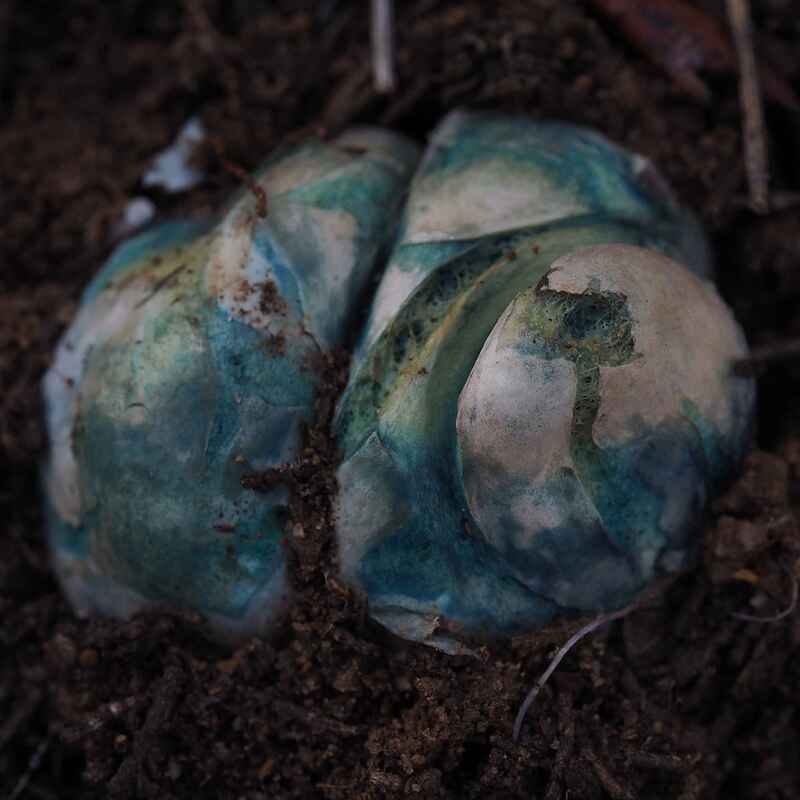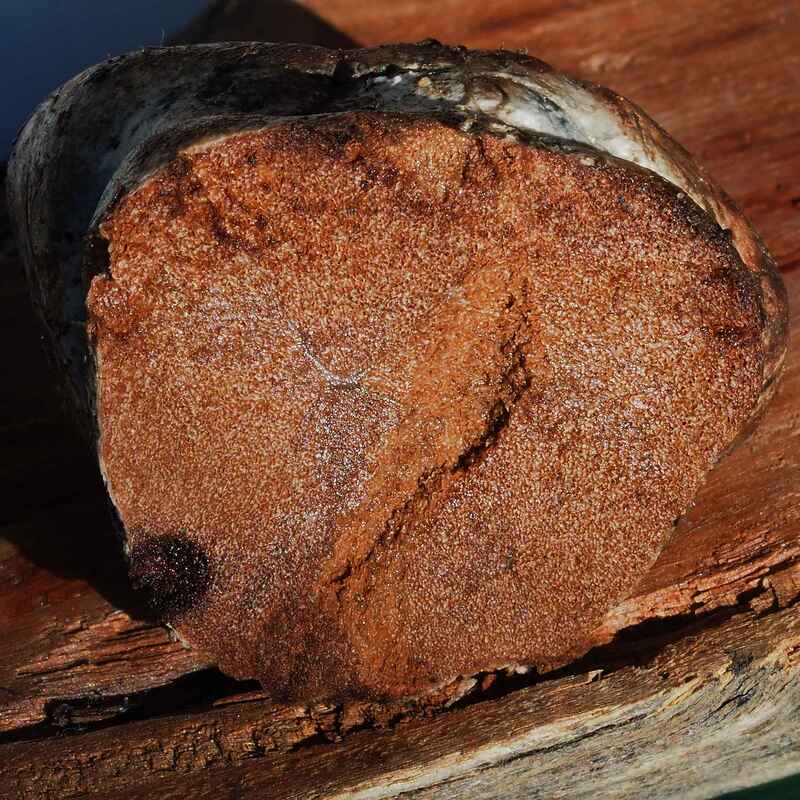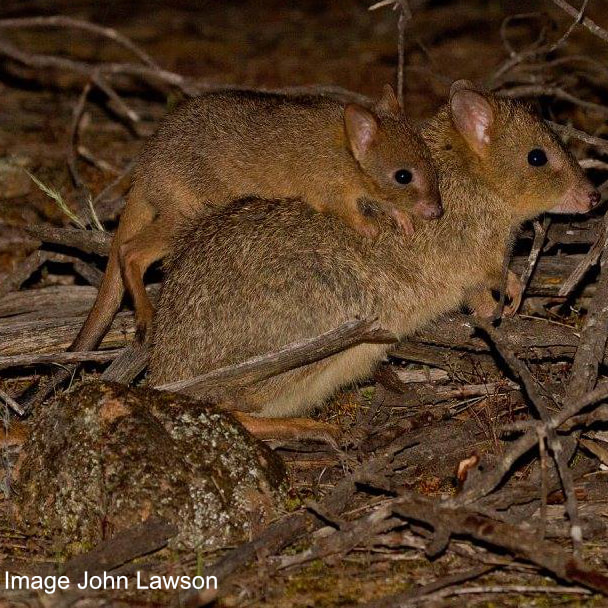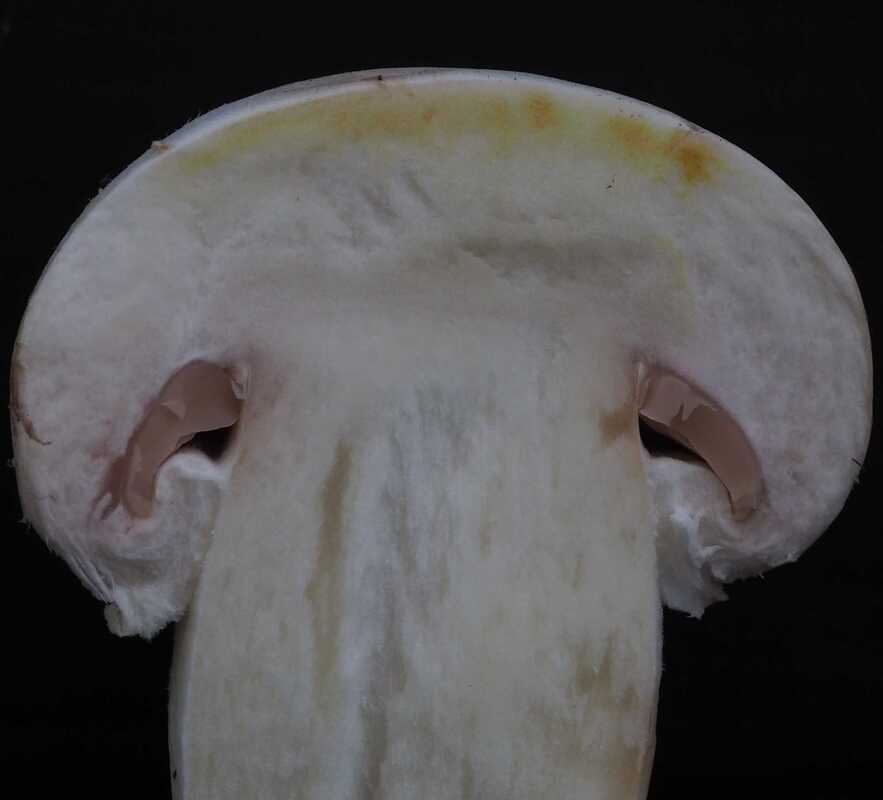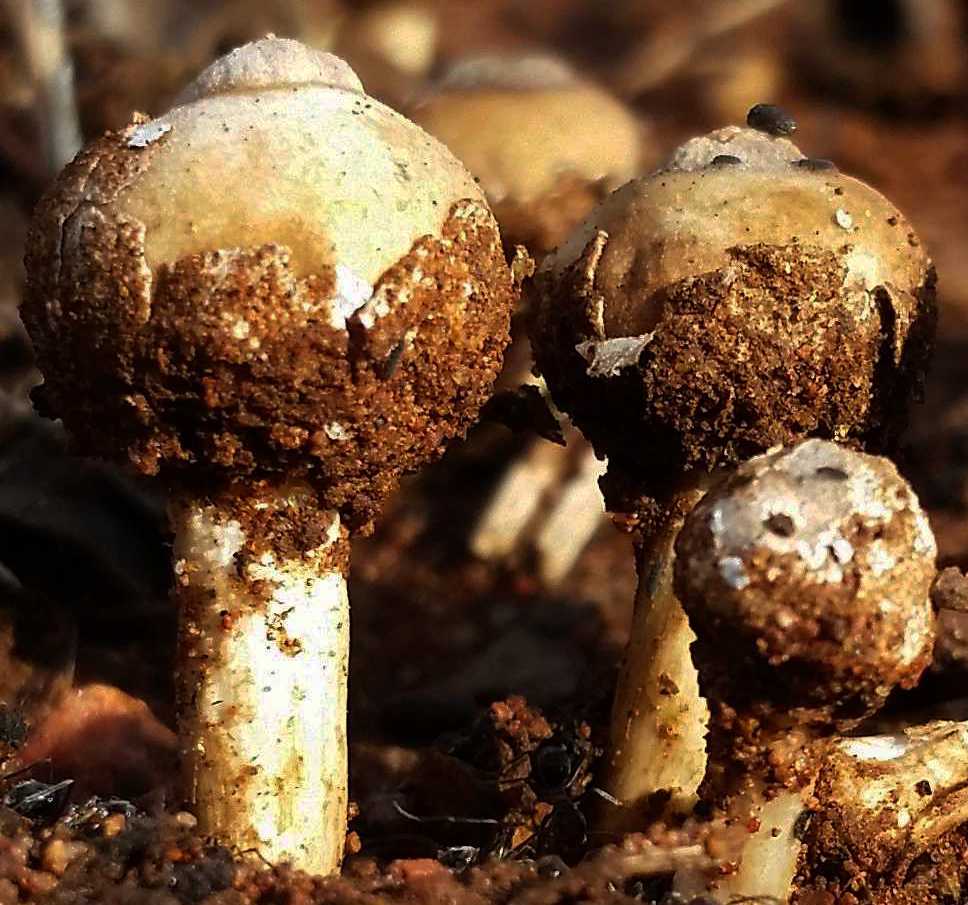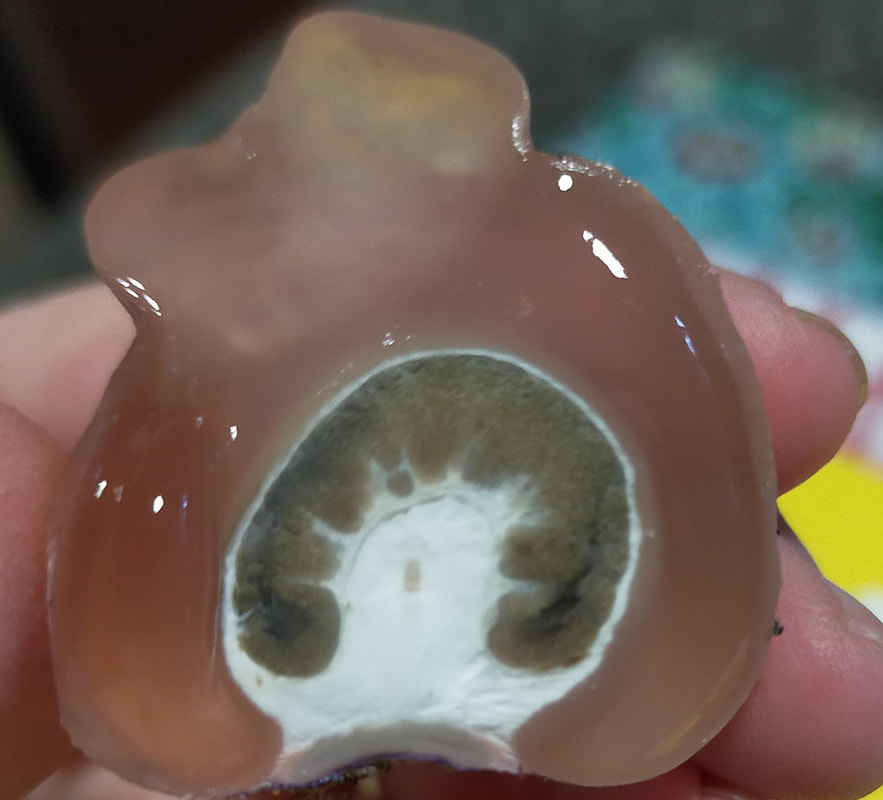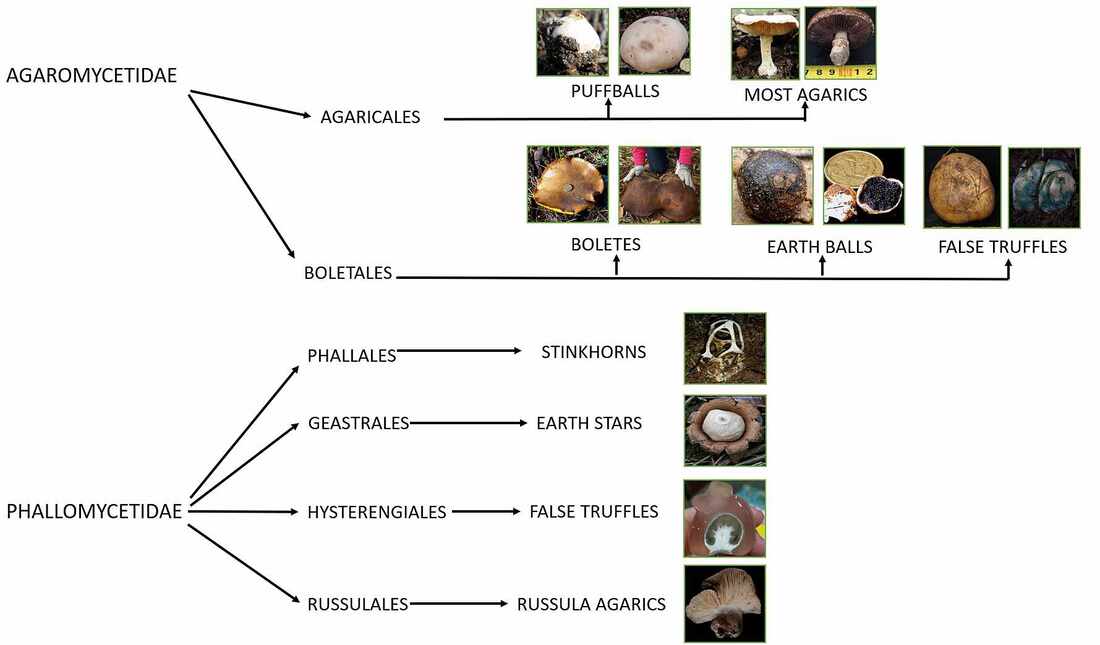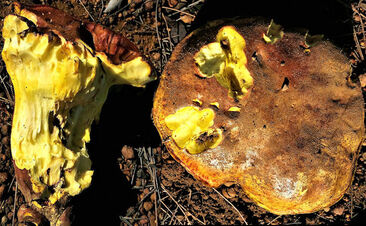 Roo-chewed salmon gum bolete
Roo-chewed salmon gum bolete The smell of the false truffle after cutting was legendary. Think Eau de Dead Roo with a hint of turpentine! This type of fungi sits below soil level, or sometimes at soil level buried under leaf litter. They don’t have a cap that opens up to release spores, but instead, the spores are formed inside the body of the fungus. False truffles resemble puffballs which don’t release their spores. They rely on birds and animals to eat them, the spores passing through the animal’s digestive tract and deposited in their scats.
The woylie has a largely fungivorous diet and will dig for a wide variety of their fruiting bodies. Although it may eat tubers, seeds, insects the bulk of its nutrients are derived from underground fungi, which it digs out with its strong fore-claws. The fungi can only be digested indirectly. They are consumed by bacteria in a portion of its stomach. The bacteria produce the nutrients that are digested in the rest of the animal's stomach and small intestine. Before white settlement woylies were abundant so there are lots of false truffles around. We neither see nor smell them because they are usually just beneath the ground or leaf litter
Further reading
